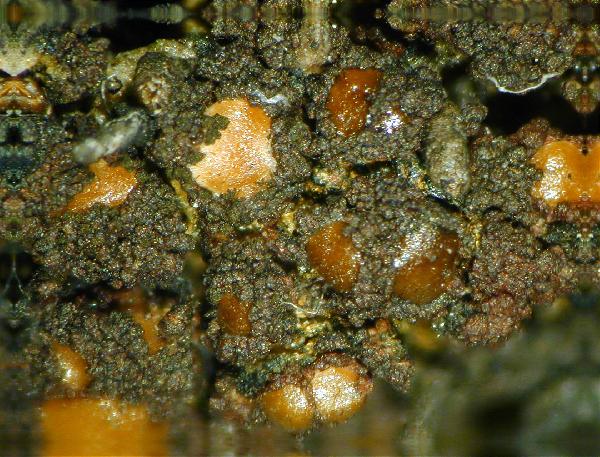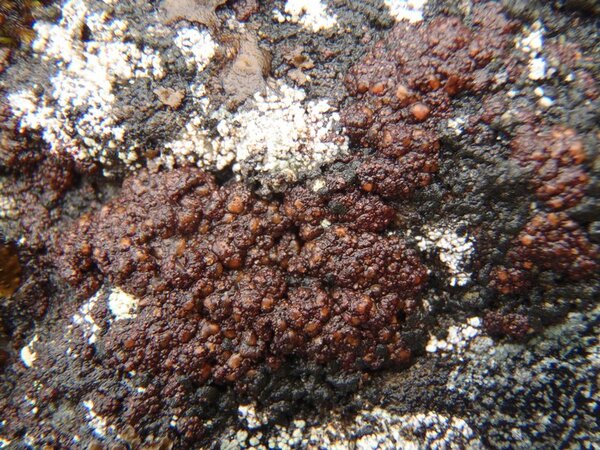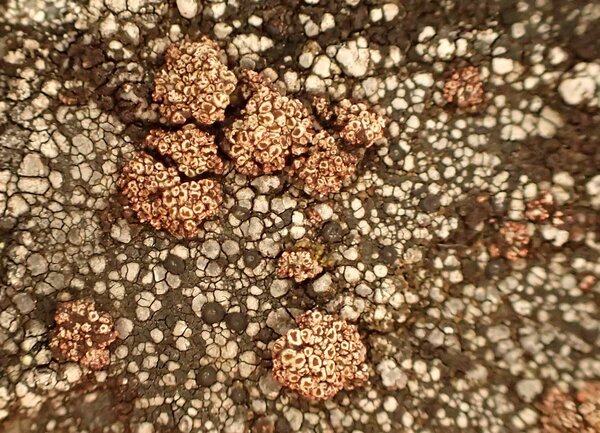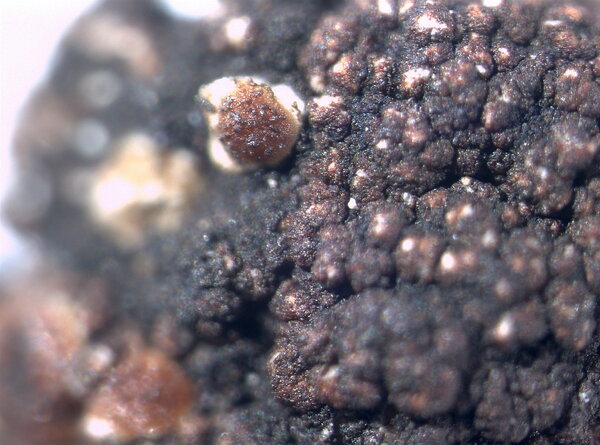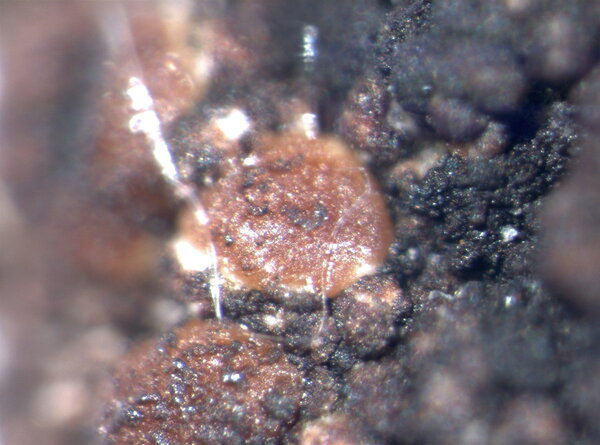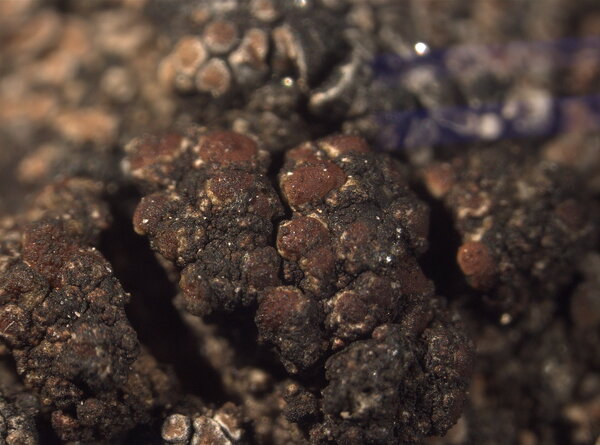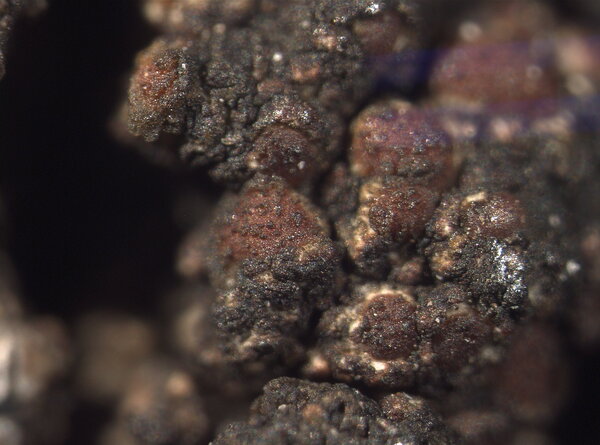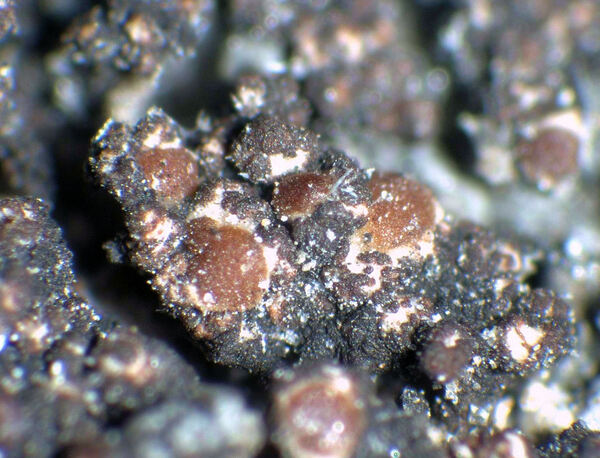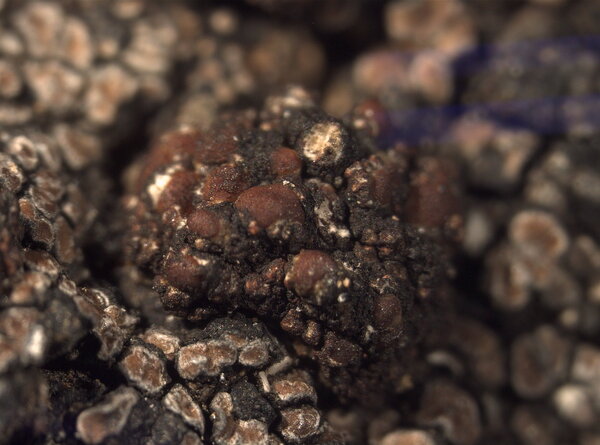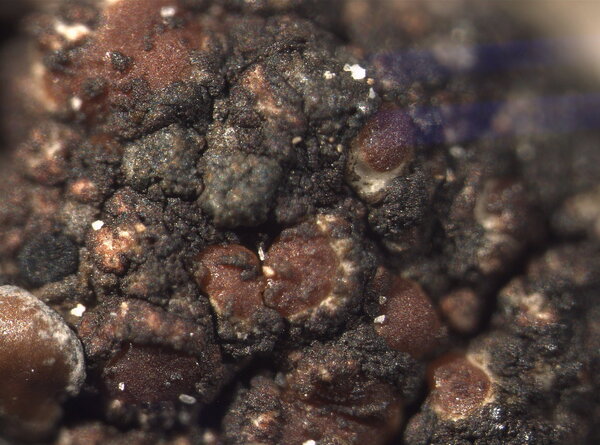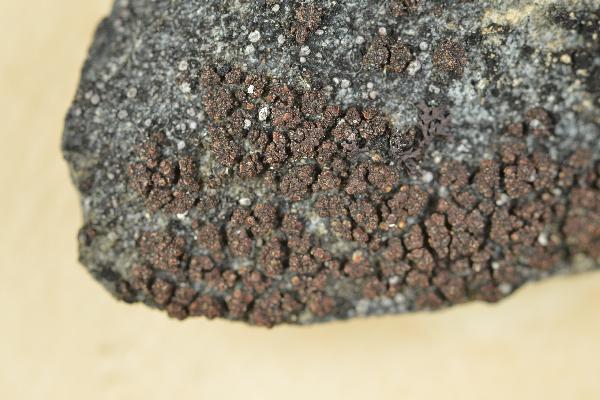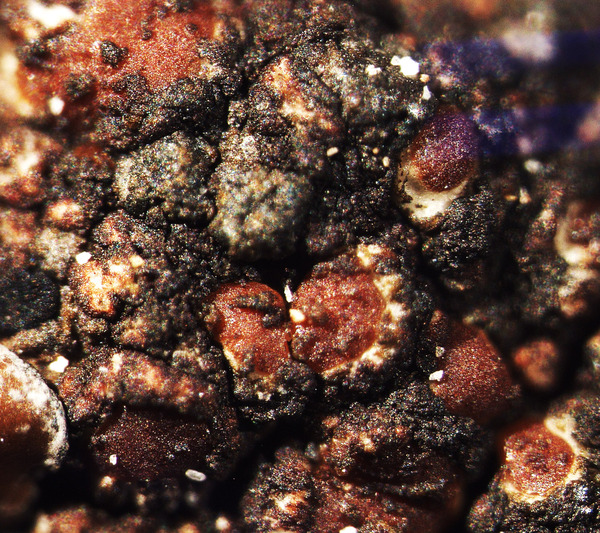Euopsis granatina (Sommerf.) Nyl.
Flora, 58: 363, 1875. Basionym: Lecanora granatina Sommerf. - Suppl. Fl. Lapp.: 90, 1826.
Synonyms: Pyrenopsis granatina (Sommerf.) Nyl.; Pyrenopsis rufescens Nyl.
Description: Thallus crustose, homoiomerous, subgelatinous when wet, ecorticate, of granular, subumbilicate small warts, red-brown and white-spotted, to 0.2 mm thick. Thallus anatomy paraplectenchymatous, the hyphae forming a network around the photobiont cells. Apothecia formed in a tangle of generative hyphae. to 0.5 mm across, immersed to adnate, with a flat to convex, red-brown, glossy disc, and a whitish, irregular margin containing green algae. Thalline exciple thick, paraplectenchymatous; proper exciple thin, 10-20(-25) μm wide, of parallel hyphae; epithecium brownish; hymenium colourless, 70-100(-120) μm high, I-, K/I-; paraphyses slender, sparingly branched, septate, gelatinized, c. 2 μm thick, not swollen at tips; hypothecium brownish, 60-75 μm high. Asci 8-spored, cylindrical, unitunicate, the wall composed of an outer, non-expansible and an inner, expansible layer surrounding the protoplast as an amyloid collar, which expands during spore release into a long, tapering rostrum, the outer wall layer strongly amyloid, its upper part separated from the expanded amyloid rostrum by a non-amyloid zone. Ascospores 1-celled, hyaline, oblong to slightly curved, 9-13 x 4-7 μm. Pycnidia rare, immersed in warts. Conidia bacilliform, 4-5 x c. 1 μm. Photobiont cyanobacterial, chroococcoid (Gloeocapsa), surrounded by a reddish (in outer parts) to colourless (in inner parts) gelatinous sheath, with additional trebouxioid green algae in delimited areas, especially in the thalline margin of apothecia. Spot tests: thallus K-, C-, KC-, P-. Chemistry: without lichen substances.
Growth form: Crustose
Substrata: rocks
Photobiont: cyanobacteria, coccaceous (e.g. Gloeocapsa)
Reproductive strategy: mainly sexual
On otherwise dry surfaces with short periods of water seepage after rain
Commonnes-rarity: (info)
Alpine belt: extremely rare
Subalpine belt: very rare
Montane belt: absent
Dry submediterranean belt: absent
Humid submediterranean belt: absent
Padanian area: absent
pH of the substrata:
1 2 3 4 5
Solar irradiation:
1 2 3 4 5
Aridity:
1 2 3 4 5
Eutrophication:
1 2 3 4 5
Poleotolerance:
0 1 2 3
Altitudinal distribution:
1 2 3 4 5 6
Rarity
absent
extremely rare
very rare
rare
rather rare
rather common
common
very common
extremely common
Loading data...
Occurrence data
Predictive map
Growth form: Crustose
Substrata: rocks
Photobiont: cyanobacteria, coccaceous (e.g. Gloeocapsa)
Reproductive strategy: mainly sexual
On otherwise dry surfaces with short periods of water seepage after rain
Commonnes-rarity: (info)
Alpine belt: extremely rare
Subalpine belt: very rare
Montane belt: absent
Dry submediterranean belt: absent
Humid submediterranean belt: absent
Padanian area: absent
pH of the substrata:
| 1 | 2 | 3 | 4 | 5 |
Solar irradiation:
| 1 | 2 | 3 | 4 | 5 |
Aridity:
| 1 | 2 | 3 | 4 | 5 |
Eutrophication:
| 1 | 2 | 3 | 4 | 5 |
Poleotolerance:
| 0 | 1 | 2 | 3 |
Altitudinal distribution:
| 1 | 2 | 3 | 4 | 5 | 6 |
Rarity
absent
extremely rare
very rare
rare
rather rare
rather common
common
very common
extremely common
Loading data...
Occurrence data
Predictive map


